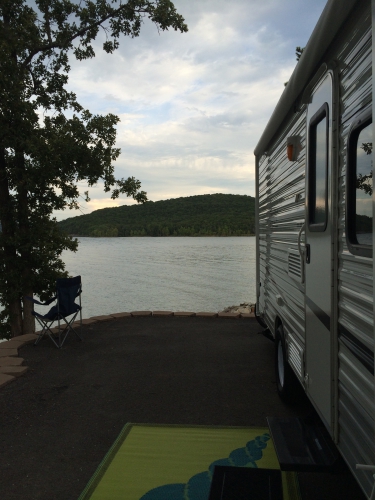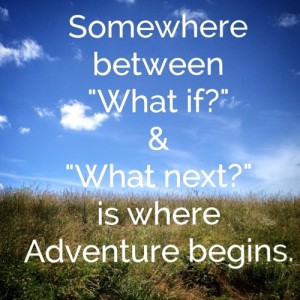How to Plan an RV Family Road Trip
Buying our first little camper has given us an economical way to travel. This summer, we are planning to take a massive cross-country road trip that’s a little bit ‘Route 66’ and whole lot of ‘America the Beautiful.’
“The mountains are calling and I must go.”
After falling in love with the Rocky Mountains, I’ve decided John Muir was right when he said, “The mountains are calling and I must go.” Yosemite became the next dream destination in my head.
We bought Birdy at the end of last summer, and I began tossing out the Yosemite idea. However, it seemed unimaginable that we could drive so far across the country hauling our travel trailer, especially while hauling two tween boys, as well. However, the more I joked about it, the more I realized we need to dream big and JUST DO IT.
So, how does one go about planning a massive cross country trip? Here’s how my process worked. In June, we’ll find out if I did well or not!
1) Route Your Roundtrip- To get a sense of the scope of our trip, I began by mapping the route on the Good Sam Trip Router (I’m know there are many other websites and apps with similar features). Starting here gave me a sense of the hours of driving involved and a visual idea of what destinations we would be driving by. I also began developing our budget by using the Trip Router to estimate our fuel costs.
2) Decide on Your Destinations- With over 60 hours of driving involved in traveling to Yosemite and back, we knew breaking up the trip would be important to our sanity (and our boys’ sanity, most importantly). We want to see as many National Parks as possible, so we planned some bigger stays at Sequoia and the Grand Canyon in addition to our major destination of Yosemite. From there, I looked to break up the long stretches of driving with stops at wonderful cities to explore, as well as basic overnight stays. We plan to use the Roadtrippers website to find quirky stops, roadside attractions, and scenic locations along our route to California.

3) Pick Your RV Parks- When staying in tourist destinations, you must pick your RV parks fairly early in your planning and make reservations. For Yosemite, if you want to stay in the park, you must book your campsite approximately 5 months ahead of time. Of course, many RV parks never fill up and don’t require reservations. I decided to only book the parks where we were planning multiple-night stays. The one-night stays are in locations with plenty of options, so we will chance it. There’s always the Walmart parking lot if we can’t find a campground with an opening.

When you’ve never been to a location, how do you know where to stay? As a consummate researcher, the Internet is my best friend. The Good Sam website shows me their parks, as well as other private and public campgrounds, on my travel map. To learn about individual RV parks, the following websites are great sources of information:
- Rv Park Reviews: Type in any location and find parks with ratings and reviews. Read tips from visitors. This is a great way to get an idea about the various options for each location.
- Trip Advisor: After narrowing in my choices from RV Parks Review, visit Trip Advisor to read more reviews there. Reviewers can add their own photos, which can give you a better sense of the RV parks’ qualities.
- Campendium: Campendium is a very new site, and reviews are just beginning to roll in. I feel like the reviewers on Campendium are looking for the same qualities in an RV park that I am. They seem to be people who like natural beauty, along with a clean place to stay.
- Youtube: After reading and looking at photos, try to look for videos of the parks. These can be hard to find, so that’s something my husband and I hope to put out there in the future to help fellow travelers. Even a super short video can tell a lot about a park.
4) Organize your Information: For our long trip, I have already accumulated a ton of information. Google Drive is my handy way to keep track of all of these details and access them from anywhere. Currently, my Google Drive has docs for the following:
- A day-to-day itinerary of where we are going to be on each day. If it’s a day where we will be driving, I’ve included the estimated number of hours (and then keep trying to keep in mind that it’ll likely take us twice as long since we travel like a pack of turtles sometimes).
- A list of all of our campgrounds, their prices, the discounts we are using (Good Sam or KOA), and the directions according to the campground’s website. We’ve discovered that it’s best to see if they provide different directions than GPS. One campground noted that GPS would send us along a route full of mountainous switchbacks, and they provided an alternative route. Super important to know!
- A list of some of the many places we plan to visit along the way and at each destination.
I recognize that this blog post might make some of you want to scream! You free-spirited travelers are awesome, but I am not one of you (at least, not for a 6000-mile journey). Just so you know, though I have planned a lot for this trip, I have also been careful to leave plenty of blank spaces. We are only traveling 3 to 5 hours on most of our driving days, leaving plenty of time for spontaneous stops. On our trip home, we don’t have anything planned for the final 18-hours of the journey…we can speed on home or take our time.
Your method of RV trip planning may be very different from mine, but I’m hoping this post is useful to those travelers who are overwhelmed about where to begin their planning. Remember, a very serious quote by Lao Tau says, “A journey of a thousand miles begins with a single step.” That applies to planning your next RV family vacation.
Find Travels with Birdy:If you have any great planning tips to share, let me know in the comments!
Share this post:

